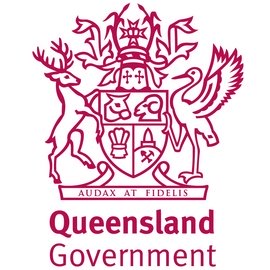This is according to a new research report by Kelly Norris, a teacher and senior research associate at think tank the Centre for Independent Studies, who argues an evidence-aligned, national numeracy screening tool should be implemented in Year 1.
Norris told EducationHQ that while great strides had been made in literacy with the introduction of a national Phonics Screening Check to identify those students at risk of falling behind in reading, there was no equivalent screening for early numeracy skills that was widely or effectively used.
“I think numeracy always lags behind literacy to some degree,” she noted.
“We’ve seen that in the research, as well as in the rollout of good tools and good intervention programs.
“But we are very lucky, in that I feel that literacy has blazed a trail for us in showing us what sorts of tools we need, what sorts of interventions can work – so it's now time to apply what we’ve learned in literacy to numeracy, which is equally important in predicting children’s success both at school and also in life.”
Norris points out that some 400,000 Australian students per year – or 10 per cent of all schoolchildren – need additional support or are below the international benchmark in mathematics.
And more than one quarter of 15-year-olds are low performers in the subject, according to international testing results, she adds.
Norris contends that current tools used by schools do not clearly identify those students who are at-risk in numeracy, nor do they bring about instructional actions that are likely to improve their outcomes, she said.
Meanwhile, NAPLAN testing in Year 3 kicks in too late to identify those at risk of falling behind.
A Year 1 national numeracy screening tool is what “teachers are really crying out for”, Norris maintains.
“Certainly in my conversations with teachers … their message that is coming out is ‘yes, we have the tools for literacy – what is there to help us in maths? How do we identify these children early so that we know that we’re able to give them the support that they need?’
“So, I think teachers want these tools. They want to know that they’re getting reliable and efficient forms of evidence, so that they can do their job more effectively.”
Norris proposed that the numeracy screener should hone in on three key components of ‘number sense’, which it is known predict children’s future success in maths. These involve:
- Number - which covers understanding about number symbols and non-symbolic representations (such as dots), the ability to count items accurately, and read, write and say numbers. It also includes early understandings about the properties of numbers, such as place value.
- Number relations - which refers to understanding the magnitude of numbers. It includes knowledge of sequence and the use of a ‘mental number line’ which enables students to compare numbers in terms of their magnitude and to have an accurate sense of where they sit on a number line in relation to other numbers (more than/less than/half way/closer to etc).
- Number operations - which involves understanding and knowledge about addition and subtraction, as well as the operations in terms of combining, separating and adding to sets, understanding that numbers are comprised of other numbers, and knowledge about the composition of small numbers (eg. 9 as 4 and 5 or 14 as 10 and 4).
For those children that fall through the cracks early on, we know their prospects are grim, Norris warned.
“What we’ve found, is that when children have early difficulties with mathematics (and) they experience poor achievement, that often leads to problems with self-esteem, and even the development of anxiety – that anxiety could be specific to maths, or it could be more general and applied to schooling.
“And then once you become anxious about something, you start to avoid it. And the last thing we want in the current economy, with so many jobs in the STEM fields, is for children to be avoiding maths when they’re very young.”
In the short-term, once children start dodging maths they get less practice at it, which only further hinders their progress and achievement at school, the expert said.
“It becomes this really negative, self-perpetuating cycle.”
But while early screening is critical, it’s not enough to move the dial for our most vulnerable children, Norris flagged.
High quality Tier 1 instruction in the classroom, delivered within a Multi-Tiered Systems of Support framework, is really the key here to prevent learning gaps from occurring in the first place, she said.
“We are very lucky in that there’s been a lot of research in this area recently.
“[High quality Tier 1 maths instruction] involves a lot of very careful sequencing. It involves some very specific teaching and modelling around the correct use of language, children are really supported to develop concepts, but also fluency with those concepts so that then they are able to reason with them.
“The ultimate goal, I think everybody agrees, of maths instruction is for children to be able to reason with mathematics.
“But if we want children to get there, we need to give them lots of support and guidance in those foundational skills.”
It’s now time that numeracy became the focus of our improvement agenda, Norris concluded.
“Numeracy is a really important area for us to be directing our effort.
“It’s not just about (what happens at) school, we know that once children become adults … if they have poor numeracy skills, they’re likely to earn lower income, they have lower rates of employment, higher rates of homelessness, and poor health outcomes.
“So, this isn’t just an educational issue. It’s also a social and health issue, and it’s one that we really need to be putting at the forefront of our thinking.”















